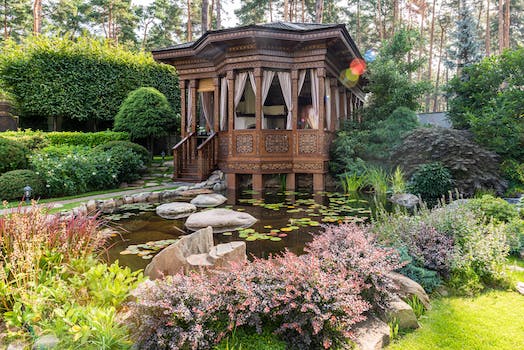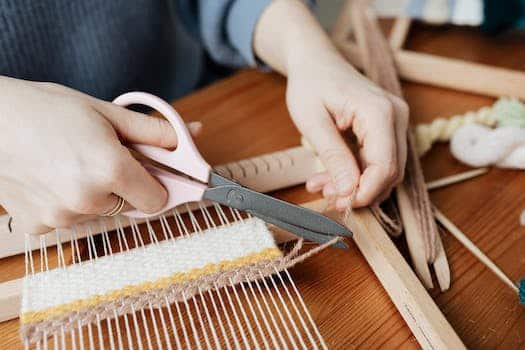Looking for some creative and budget-friendly ideas to spruce up your outdoor space? Look no further than these 10 DIY garden bed ideas. Whether you have a small balcony or a sprawling backyard, these projects are sure to add some charm and functionality to your garden. From raised beds to vertical gardens, there’s something here for every type of gardener. So grab your tools and get ready to get your hands dirty!
- 1. Introduction
- 1.1. Benefits of DIY garden beds
- 1.2. Materials needed for DIY garden beds
- 1.3. Things to consider before building a DIY garden bed
- 1.4. Tips for maintaining a DIY garden bed
- 1.5. Common mistakes to avoid when building a DIY garden bed
- 2. Raised Garden Beds
- 2.1. Types of raised garden beds
- 2.2. Materials needed for raised garden beds
- 2.3. Step-by-step guide to building a raised garden bed
- 2.4. Decorative ideas for raised garden beds
- 2.5. Benefits of raised garden beds
- 3. Vertical Garden Beds
- 3.1. Types of vertical garden beds
- 3.2. Materials needed for vertical garden beds
- 3.3. Step-by-step guide to building a vertical garden bed
- 3.4. Creative ideas for vertical garden beds
- 3.5. Benefits of vertical garden beds
- 4. Container Garden Beds
1. Introduction
Gardening is a great way to add beauty and fresh produce to your outdoor space. However, traditional gardening can be time-consuming and require a lot of space. That’s where garden beds come in! Garden beds are a great way to grow plants in a small area, and they also provide better soil quality and drainage. In this article, we will explore 10 DIY garden bed ideas that will enhance the beauty and functionality of your outdoor space.
1.1. Benefits of DIY garden beds
DIY garden beds are a great way to add some greenery to your outdoor space while also reaping the benefits of gardening. Not only do they allow you to customize the size and shape of your garden beds, but they also provide a more controlled environment for your plants, which can lead to healthier and more abundant growth. Additionally, creating your own garden beds can be a fun and rewarding DIY project that can be enjoyed by gardeners of all skill levels. In this article, we will explore 10 different DIY garden bed ideas that you can use to enhance your outdoor space and enjoy the benefits of gardening.
1.2. Materials needed for DIY garden beds
Before starting any DIY garden bed project, it is important to gather all the materials needed. The following is a list of common materials that may be required:
– Wood planks or pallets
– Garden soil
– Compost
– Mulch
– Landscape fabric
– Nails or screws
– Hammer or drill
– Saw or jigsaw
– Measuring tape
– Level
– Gloves
– Safety glasses
Depending on the specific design and size of the garden bed, additional materials may be necessary. It is best to plan out the project in advance and ensure that all materials are readily available before beginning.
1.3. Things to consider before building a DIY garden bed
Before embarking on a DIY garden bed project, there are a few things to consider. First, decide on the location of the garden bed. Choose an area that gets plenty of sunlight and is easily accessible for watering and maintenance. Next, determine the size and shape of the garden bed. Consider the type and quantity of plants you want to grow and make sure the bed is large enough to accommodate them. Additionally, think about the materials you will use for the bed, such as wood, stone, or brick, and make sure they are durable and appropriate for outdoor use. Finally, plan for proper drainage to prevent water from pooling in the bed and causing damage to your plants.
1.4. Tips for maintaining a DIY garden bed
Maintaining a DIY garden bed can be a rewarding experience that can help you grow your own fruits, vegetables, and flowers. However, it’s important to keep in mind that maintaining a garden bed requires effort and attention. In this section, we will provide you with some tips to help you maintain your DIY garden bed and ensure that it thrives.
1.5. Common mistakes to avoid when building a DIY garden bed
Building a DIY garden bed can be a fun and rewarding experience, but it’s important to avoid common mistakes that can lead to frustration and disappointment. Whether you’re a seasoned gardener or a first-time DIYer, it’s important to take the time to plan and prepare before you start building. In this section, we’ll explore some of the most common mistakes people make when building DIY garden beds, and offer tips on how to avoid them.
2. Raised Garden Beds
Raised garden beds are a great addition to any outdoor space. They provide a defined area for gardening, which can help with organization and maintenance. Plus, they can be customized to fit any size or style of garden. Here are 10 DIY garden bed ideas to inspire your next outdoor project.
2.1. Types of raised garden beds
Raised garden beds are a great way to add some green to your outdoor space. There are many types of raised garden beds to choose from, each with its own unique benefits. Here are some of the most popular types:
1. Wooden garden beds
2. Metal garden beds
3. Concrete garden beds
4. Stone garden beds
5. Plastic garden beds
6. Brick garden beds
7. Cinder block garden beds
Each of these materials has its own advantages and disadvantages, so it’s important to choose the one that best fits your needs. Some factors to consider include durability, cost, and aesthetics. With so many options available, you’re sure to find the perfect raised garden bed for your outdoor space.
2.2. Materials needed for raised garden beds
Raised garden beds are a great option for those who are looking to start a garden in their outdoor space. They offer several benefits such as better drainage, easier access to the plants, and better soil quality. However, before starting on your raised garden bed project, it is important to gather the necessary materials. Here are some of the materials you will need:
– Wood planks or bricks
– Screws or nails
– Drill or hammer
– Soil
– Compost
– Mulch
– Plants or seeds
Depending on the size and design of your raised garden bed, you may need additional materials such as a garden bed liner to prevent weeds from growing, or a trellis for climbing plants. Overall, the materials needed for raised garden beds are relatively simple and easy to obtain, making it a great DIY project for any gardening enthusiast.
2.3. Step-by-step guide to building a raised garden bed
Building a raised garden bed can be a great addition to any outdoor space. Not only does it provide a designated area for gardening, but it also helps to prevent soil erosion and makes it easier to control the soil quality and drainage. Here is a step-by-step guide to building a raised garden bed:
1. Choose a location – Find a spot in your yard that gets at least 6 hours of sunlight a day and has easy access to water.
2. Gather materials – You will need untreated lumber, screws, a drill, and a saw.
3. Cut the lumber – Cut your lumber to the desired lengths for the sides of your garden bed.
4. Assemble the sides – Drill pilot holes and screw the sides together.
5. Level the ground – Use a shovel to level the ground where you will be placing your garden bed.
6. Place the bed – Place your garden bed on top of the leveled ground.
7. Add soil – Fill your garden bed with soil and compost.
8. Plant – Plant your desired plants and enjoy your new raised garden bed!
2.4. Decorative ideas for raised garden beds
Raised garden beds are a great addition to any outdoor space, not only do they add visual interest, but they also provide a practical way to grow plants, herbs, and vegetables. Decorating your raised garden beds can be a fun and creative way to add some personality to your garden. Here are some decorative ideas for raised garden beds:
1. Add a trellis: A trellis can be a great way to add some height to your raised garden bed and provide support for climbing plants.
2. Use colorful planting: Planting a variety of colorful flowers, herbs, and vegetables can add visual interest to your raised garden bed.
3. Add decorative edging: Use bricks, stones, or even recycled materials to create decorative edging around your raised garden bed.
4. Create a themed garden bed: Choose a theme, such as a butterfly or herb garden, and decorate your raised garden bed accordingly.
5. Use decorative planters: Add some decorative planters to your raised garden bed to add some variety and interest.
6. Add lighting: Using solar-powered lights can add some ambiance to your raised garden bed and make it a great place to relax in the evening.
7. Use decorative mulch: Use colored or textured mulch to add some extra visual interest to your raised garden bed.
8. Add a water feature: A small water feature, such as a fountain or pond, can add some tranquility to your raised garden bed.
9. Use decorative stakes: Use decorative stakes to add some vertical interest to your raised garden bed.
10. Create a seating area: If your raised garden bed is large enough, create a seating area where you can sit and enjoy your garden.
2.5. Benefits of raised garden beds
Raised garden beds offer numerous benefits for garden enthusiasts. Firstly, they provide better soil drainage, which prevents waterlogging and root rot. Additionally, raised garden beds allow for better soil aeration, which promotes healthier root growth. They also provide better access for gardeners, particularly those with mobility issues, as they eliminate the need for bending and kneeling. Raised garden beds are also ideal for small outdoor spaces, as they allow for efficient use of limited space. Finally, they offer greater control over soil quality, making it easier to grow healthy plants and vegetables.
3. Vertical Garden Beds
Vertical garden beds are a great option for small outdoor spaces or for those who want to maximize their garden space. They take up less horizontal space but provide ample room for plants to grow vertically. These types of garden beds can be created using a variety of materials, such as wood, metal, or even PVC pipes. They can also be designed in different shapes and sizes to fit your specific outdoor area. Consider creating a vertical garden bed using a trellis or even repurposing an old bookshelf. The possibilities are endless when it comes to vertical garden beds!
3.1. Types of vertical garden beds
Vertical garden beds are a popular way to grow plants in limited spaces. There are several types of vertical garden beds to choose from, each with its own benefits and drawbacks. Some of the most common types of vertical garden beds include hanging planters, wall-mounted planters, pallet planters, and tower planters. Hanging planters are great for small spaces and can be hung from walls or ceilings. Wall-mounted planters are perfect for adding greenery to a blank wall, while pallet planters are an excellent option for those on a tight budget. Tower planters are ideal for growing a variety of plants in a small footprint. No matter which type of vertical garden bed you choose, be sure to choose plants that are well-suited for the amount of light and water they will receive in their new home.
3.2. Materials needed for vertical garden beds
When it comes to creating a vertical garden bed, the right materials can make all the difference. Here are some of the key materials you’ll need to get started:
1. Container or frame – this will hold the soil and plants in place. You can use anything from a wooden frame to a hanging shoe organizer.
2. Soil – choose a high-quality soil that is rich in nutrients and drains well.
3. Plants – pick plants that are well-suited to your climate and that will thrive in a vertical garden.
4. Watering system – depending on the size of your vertical garden, you may need a drip system or other watering mechanism to ensure your plants stay hydrated.
5. Fertilizer – to keep your plants healthy and growing strong, choose a fertilizer that is suitable for your chosen plants and follow the recommended application guidelines.
3.3. Step-by-step guide to building a vertical garden bed
A vertical garden bed is a great way to maximize your outdoor space while adding a pop of greenery to your surroundings. Whether you are a seasoned gardener or a beginner, building a vertical garden bed is a fun and rewarding project that can be completed in just a few simple steps. Follow this step-by-step guide to create your own vertical garden bed and bring your outdoor space to life!
3.4. Creative ideas for vertical garden beds
Vertical garden beds are a great way to add some greenery to your outdoor space, especially if you have limited space or live in an urban area. The great thing about vertical gardens is that they can be created in a variety of ways, using a range of materials. Here are some creative ideas for vertical garden beds:
1. Pallet Garden Bed – Use old pallets to create a rustic and eco-friendly vertical garden. You can paint them in bright colors or leave them natural for a more organic look.
2. Hanging Garden Bed – Hang pots from a wall-mounted frame or a tree branch to create a beautiful hanging garden. This is a great option for renters who don’t want to damage their walls or for those who have limited outdoor space.
3. Tiered Garden Bed – Use a tiered planter to create a vertical garden with multiple levels. This is a great option for those who want to grow a variety of plants in a small space.
4. Wall-mounted Garden Bed – Install a wall-mounted planter to create a stunning vertical garden on your outdoor wall. This is a great way to add some color and texture to your outdoor space.
5. Trellis Garden Bed – Use a trellis to create a vertical garden that can be easily moved around your outdoor space. This is a great option for those who want to experiment with different plant arrangements.
6. Bottle Garden Bed – Use recycled bottles to create a unique and eco-friendly vertical garden. This is a great option for those who want to add some color to their outdoor space without spending a lot of money.
7. Stacked Garden Bed – Stack planters on top of each other to create a vertical garden with a modern look. This is a great option for those who want to add some style to their outdoor space.
8. Fence-mounted Garden Bed – Use a fence-mounted planter to create a vertical garden that can be easily moved around your outdoor space. This is a great option for those who want to experiment with different plant arrangements.
9. Window Garden Bed – Use a window planter to create a stunning vertical garden that can be seen from inside your home. This is a great way to add some greenery to your indoor space as well.
10. Hanging Bottle Garden Bed – Use recycled bottles to create a hanging vertical garden that can be easily moved around your outdoor space. This is a great option for those who want to add some color to their outdoor space without spending a lot of money.
3.5. Benefits of vertical garden beds
Vertical garden beds offer several benefits for outdoor spaces. Firstly, they maximize space utilization, making it possible to grow a large variety of plants in a small area. Secondly, they are easier to maintain than traditional garden beds since they are raised off the ground and require less bending and kneeling. Additionally, vertical garden beds can serve as a beautiful and functional design element, adding visual interest and texture to any outdoor space. They also provide better air circulation for the plants and can help reduce pest and disease problems. Finally, vertical garden beds are a great option for urban gardeners and those with limited outdoor space, as they can be easily installed on balconies, patios, and even indoors.
4. Container Garden Beds
Container garden beds are a popular choice for those who have limited outdoor space or want to easily move their garden beds around. They can be made from a variety of materials such as plastic, ceramic, or even repurposed items like old tires or a wheelbarrow. Container garden beds are also great for those who want to grow specific plants that require different soil types or drainage needs. Some popular container garden bed ideas include using hanging baskets, stacking planters, or using a tiered planter. With a little creativity and some DIY skills, the possibilities for container garden beds are endless!
4.1. Types of container garden beds
Container garden beds are a great way to add some greenery and life to any outdoor space. There are a variety of options available when it comes to choosing the type of container garden bed that is right for you. Here are some of the most popular types:
1. Raised Beds: These are beds that are built up off the ground, usually with wood or other material. They are great for people with limited space or who want to keep their garden contained.
2. Hanging Baskets: These are baskets that are hung from a hook or bracket. They are great for small spaces and can be used to grow a variety of plants.
3. Window Boxes: These are boxes that are attached to the outside of a window. They are great for adding some color and life to a building’s exterior.
4. Vertical Gardens: These are gardens that are grown vertically, usually on a wall or fence. They are great for people with limited space or who want to add some greenery to a small outdoor area.
No matter what type of container garden bed you choose, it is important to choose the right plants for your space and climate. With a little research and some creativity, you can create a beautiful and functional garden bed that will enhance your outdoor space for years to come.
4.2. Materials needed for container garden beds
To create a container garden bed, you will need a few essential materials. Firstly, you will need a container or raised bed to hold the soil and plants. This can be made of wood, plastic, metal, or any other material that can withstand the elements. Next, you will need soil. It is best to use a high-quality potting mix that is specifically formulated for container gardening. This will provide the necessary nutrients and drainage for your plants. You may also want to consider adding compost or other organic matter to the soil to further enrich it. Finally, you will need plants or seeds to fill your container garden. Choose plants that are suitable for the amount of sunlight and space you have available, and that will thrive in a container environment. With these materials, you will be able to create a beautiful and productive container garden bed that will provide fresh herbs, vegetables, or flowers throughout the growing season.
4.3. Step-by-step guide to building a container garden bed
Building a container garden bed is a fun and easy way to add some greenery to your outdoor space. Here is a step-by-step guide to help you create your own container garden bed:
1. Choose a location for your container garden bed. Make sure it receives enough sunlight and has easy access to water.
2. Select the containers you want to use. They can be anything from wooden boxes to plastic bins, as long as they are large enough to accommodate your plants.
3. Fill the containers with soil. You can use a mix of potting soil and compost to provide your plants with the nutrients they need.
4. Choose the plants you want to grow. Make sure they are suitable for the amount of sunlight and space you have available.
5. Plant your chosen plants in the containers. Be sure to space them out properly to allow for growth.
6. Water your plants regularly and fertilize them as needed. With proper care, your container garden bed will thrive and provide you with fresh produce and beautiful flowers.
4.4. Design ideas for container garden beds
Container garden beds are a great way to add some greenery to your outdoor space, no matter how big or small. Here are 10 DIY design ideas to help you create the perfect container garden bed:
1. Tiered herb garden
2. Succulent garden in a wooden crate
3. Hanging flower baskets
4. Repurposed dresser drawer planter
5. Vertical pallet garden
6. Wheelbarrow planter
7. Mason jar herb garden
8. Terra cotta pot tower
9. Galvanized steel tub planter
10. Wooden barrel garden bed
With a little creativity and some basic DIY skills, you can easily create a beautiful container garden bed that will add color and life to your outdoor space.
4.5. Benefits of container garden beds
Container garden beds offer several benefits, including the ability to control the soil quality, drainage, and pests. They are also a great option for those with limited space, as they can be placed on balconies, patios, or even indoors. Container garden beds are easy to maintain and can be moved around as needed, making them a versatile option for any gardener. Additionally, they can be used to grow a variety of plants, including vegetables, herbs, and flowers, making them a great choice for those who want to experiment with different types of gardening.
Conclusion
In conclusion, these 10 DIY garden bed ideas are a great way to enhance your outdoor space and create a beautiful and functional garden. From raised beds to vertical gardens, there are plenty of options to suit any style and space. Get creative and enjoy the benefits of gardening in your own backyard!






These 10 innovative and imaginative DIY home decor ideas from [object Object] provide a refreshing approach to enhancing ones living…